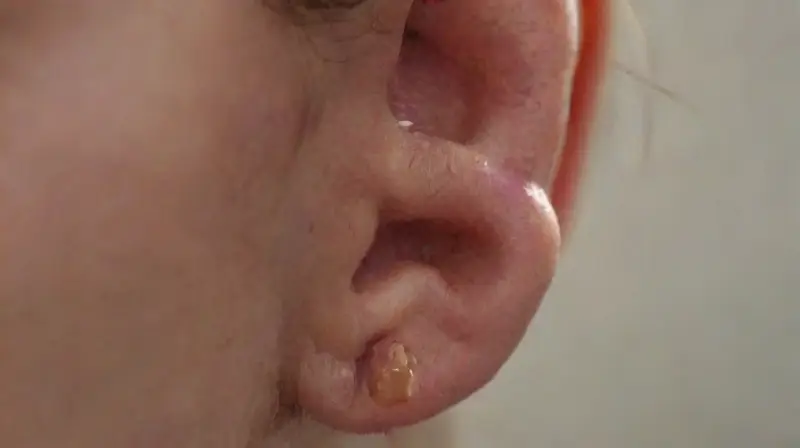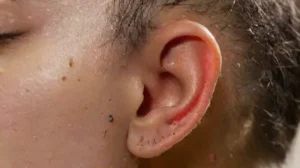Body piercing is a popular form of self-expression enjoyed by many individuals worldwide. Despite its cultural and aesthetic appeal, it involves breaking the skin barrier, which can sometimes lead to complications. One of the most serious, though rare, adverse outcomes is skin necrosis, where tissue dies due to inadequate blood supply or infection.
Understanding the risks associated with body piercing is essential for both practitioners and enthusiasts. Proper knowledge and precautions can significantly reduce the likelihood of complications such as necrosis, ensuring a safe and positive experience.
Causes of skin necrosis in body piercing
Skin necrosis after piercing is primarily caused by insufficient blood flow to the affected tissue. When a piercing is improperly placed or performed with unsterilized tools, it can damage blood vessels, impairing circulation. This can lead to tissue death if blood supply is not restored promptly.
Infections play a pivotal role in the development of necrosis. Bacterial contamination from non-sterile environments or contaminated jewelry can cause severe inflammatory responses. Such infections can compromise surrounding tissue, leading to necrosis if untreated.
Furthermore, excessive tension on the piercing site or the use of inappropriate jewelry materials may restrict blood flow. Overly tight jewelry can act as a tourniquet, cutting off circulation and increasing the risk of tissue death. Proper selection and placement are crucial for minimizing these dangers.
Common body piercing sites at risk
Certain areas of the body are more susceptible to skin necrosis due to their anatomy and blood supply. For example, piercings on the ears, especially the cartilage sections, are at increased risk because cartilage has a limited blood supply compared to soft tissue.
Nipple and genital piercings are also vulnerable because of their highly vascularized tissues. If infections or trauma occur in these zones, the risk of necrosis escalates, potentially leading to more serious complications.
Additionally, surface piercings on areas like the abdomen or hips pose a higher risk due to superficial placement and less protection from external trauma. Proper assessment of these sites by trained professionals can help reduce the risk of adverse outcomes.
Signs and symptoms of necrosis

Early detection of skin necrosis is vital for effective treatment. The initial signs include discoloration, often turning dark purple or black, indicating tissue death.
Patients might also notice a loss of sensation or increased pain around the piercing site. Swelling, foul-smelling discharge, and necrotic tissue formation are later symptoms signaling a worsening condition.
If these signs are observed, prompt medical consultation is necessary. Ignoring these symptoms can lead to widespread tissue damage, increasing the risk of systemic infections or the need for surgical intervention.
Prevention strategies
Prevention of skin necrosis begins with choosing a qualified professional for piercing procedures. Trained piercers use sterilized equipment and maintain hygienic environments to reduce infection risks.
Proper aftercare is equally important; cleaning the piercing with recommended solutions and avoiding unnecessary touching can prevent bacterial contamination. Educating patients on signs of infection and complications helps ensure prompt action if issues arise.
Selecting appropriate jewelry materials, such as surgical steel or hypoallergenic options, minimizes allergic reactions and tissue irritation. Regularly monitoring the healing process also aids in early detection of any problems, reducing the chance of necrosis developing.
Treatment options for necrosis

When skin necrosis occurs, early medical intervention is essential. Treatment typically involves removing or replacing the problematic jewelry to alleviate pressure and improve blood flow.
In some cases, antibiotics may be prescribed to combat bacterial infections. Surgical debridement, where dead tissue is excised, may be necessary to promote healing and prevent further tissue loss.
Severe necrosis might require reconstructive procedures. The treatment plan depends on the extent of tissue damage and the patient’s overall health, emphasizing the importance of professional medical evaluation.
Long-term consequences
If skin necrosis is not addressed promptly, it can lead to permanent tissue damage or disfigurement. Loss of tissue in critical areas may affect functionality, especially in genital or joint regions.
Psychologically, the aesthetic outcomes can impact an individual’s self-esteem and body image. Reconstructive surgery may be needed for aesthetic correction, involving additional procedures and recovery time.
In some cases, necrosis may result in scarring or other cosmetic concerns. Prevention and early intervention are the best strategies to avoid these long-term consequences and ensure a safer piercing experience.
Conclusion
Skin necrosis is a rare but serious complication of body piercing that can have significant physical and aesthetic repercussions. Awareness of the causes, early signs, and prevention measures plays a crucial role in minimizing risks and promoting safe practices.
Individuals considering piercing should always seek professional services and adhere to proper aftercare routines. Through education and vigilance, many adverse outcomes like necrosis can be avoided, ensuring a positive experience with body modification.







